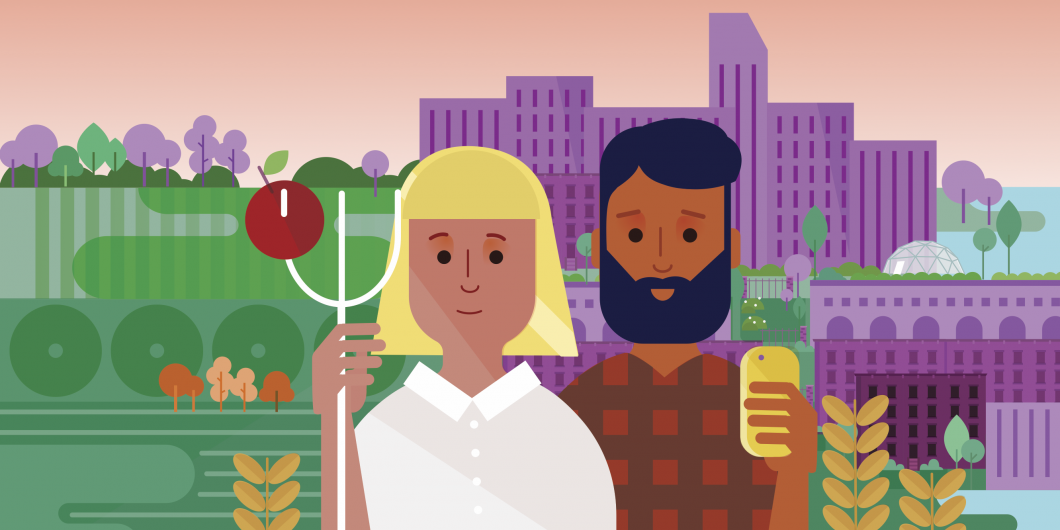Should you eat locally, organic, or healthy? Eat with your eyes or focus on taste? Canadian foodies face many challenges.
That’s one of the conclusions outlined in the latest edition of a study titled “Eaters Digest: The Future of Food” carried out by Havas. This edition of the international study examines the latest food trends. Almost 12,000 people throughout the world took part in the study, including 500 in Canada. A summary of three trends that will continue to gain popularity in Canada.
Me, My Body, and the Planet
More than 62% of Canadians think that our food supply chain has become increasingly contaminated and dangerous for our health. And it’s not just a case of inspecting the quality of what ends up on our plate. In fact, famous chefs such as Jamie Oliver and Alain Ducasse have reiterated their belief that our eating habits have consequences for the environment and these consequences in turn impact our health.
This raises a few questions. Should we eat more vegetables even when they are not in season? Should we prioritize eating organic?
Local Is the New Organic
54% of Canadians say they are willing to pay more for food produced locally.
In the food industry, eating local has become a badge for our super-consumer status, whether it’s by highlighting the freshness of the ingredients, reducing the impact transportation has on the environment, making food traceability easier, or supporting the local economy. And with only 32% of Canadians who trust the quality of food available in large supermarket chains, consuming and producing locally have become increasing popular solutions. The physical proximity creates a psychological proximity, consumers feel a certain familiarity with the product.
But eating local does not necessarily mean making a choice that’s more ethical. We prefer to eat a tomato from our garden, even if it has been polluted by exhaust gas from cars and heavy metals. We prefer a Canadian peach that has travelled more than 4,000 kilometres from the Okanagan Valley than one from nearby Vermont.
#Foodporn Is a Total Turn-on
46% of Canadian Millennials say that social media is their prime source of culinary inspiration. Food has become a form of social currency and a gateway to conversation. A dinner at a restaurant is now an opportunity to increase the number of Likes on Instagram. A trip is the perfect occasion to share any gastronomic experience. Food styling and taste appeal tend to be more important than a meal’s palatableness. In fact, the more time we spend looking at beautiful dishes that have been professionally put together, the less we trust our own culinary abilities and the less we cook. 61% of Millennials state that their culinary knowledge far surpasses their ability to cook.
How do we manage our eating habits when we don’t even prepare our own meals? How do we maintain a healthy relationship with food when eating has become more of a photo op than a way to nourish ourselves?
For centuries, the relationship between Man and food was simple. We ate what was available without asking too many questions.
Today, consumers have choices. They can choose to eat with their eyes, head, or heart. We must choose between eating for pleasure, being socially conscious, or being environmentally responsible. The more a brand succeeds in solving these contradictions, the quicker it will establish its impact. In the automotive industry for instance, a brand like Tesla is able to justify high prices because it promises motorists a car that is beautiful, powerful, and eco-friendly.
The study also describes three ways food resonates in different cultures: food is social, food is nature, food is fretful, as well as 10 food trends for 2016.
Download the study at http://mag.havasww.com/prosumer-reports/eaters-digest.
Havas partnered with Market Probe in February 2016 to survey 11,976 men and women in 37 countries.


